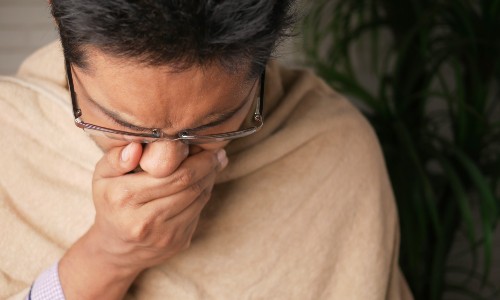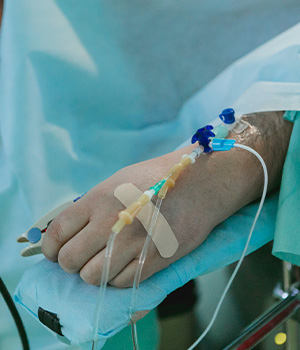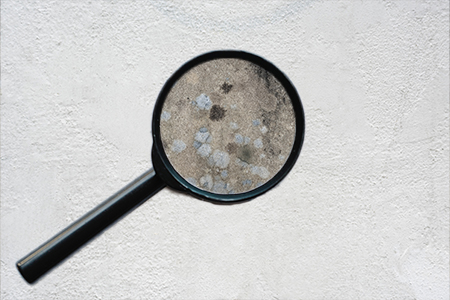Mold can wreak havoc on your health, despite being quite common. This article explores the health risks of mold exposure, focusing on three key aspects: lung issues, allergic reactions, and skin problems. We’ll also delve into how mold poses unique threats to vulnerable groups, including children, the elderly, and those with asthma.
Understanding Mold
To comprehend the health risks of mold exposure, it’s essential to first understand what mold is and how it behaves. Mold is a type of fungi that reproduces through spores. There are various types of indoor molds, but they all share some common characteristics. Mold thrives in damp, humid conditions, making it a common problem in areas with water leaks, high humidity, or poor ventilation. Mold plays a crucial role in nature by breaking down organic matter, but when it infiltrates our homes, it can lead to health concerns.
The Risks of Mold Exposure
Respiratory Issues

One of the most significant health risks associated with mold exposure is respiratory problems. Mold produces tiny spores that can become airborne and easily inhaled. Once inhaled, these spores can irritate the respiratory system, leading to a range of symptoms.
Common symptoms of mold-related lung issues include persistent coughing, wheezing, nasal congestion, and throat irritation. For individuals with existing respiratory conditions like asthma, exposure to mold can exacerbate their symptoms, making it harder to breathe. In severe cases, prolonged mold exposure can even lead to respiratory infections.
Allergic Reactions and Skin Issues
In addition to respiratory problems, mold exposure can trigger allergic reactions and skin issues in sensitive individuals. Mold produces allergens that can cause allergic reactions in some people. These reactions may manifest as sneezing, runny nose, itchy or watery eyes, and skin rashes.
Skin issues are another concern. Mold can release irritants that, upon contact with the skin, may lead to redness, itching, and hives. These skin problems are more common in individuals with mold allergies or those with sensitive skin.
Vulnerable Populations

Mold poses a particular threat to vulnerable populations. Children, the elderly, and individuals with preexisting health conditions such as asthma or compromised immune systems are at a higher risk when exposed to mold.
For children, mold exposure can lead to various health issues, including frequent respiratory infections, allergies, and the exacerbation of asthma symptoms. Their developing immune systems are less equipped to handle mold-related health risks.
The elderly are also vulnerable because their immune systems may weaken with age, making them more susceptible to mold-related illnesses. Moreover, mold exposure can worsen preexisting health conditions, making it harder for seniors to maintain their overall well-being.
Individuals with asthma face two threats, as mold can trigger asthma attacks and worsen their symptoms. Mold spores can irritate the airways, leading to increased coughing, wheezing, and shortness of breath.
Severe Symptoms
While the earlier sections of this article discussed common symptoms of mold exposure, it’s crucial to delve deeper into the more severe and long-lasting effects that can emerge when mold problems go untreated. These major effects are particularly concerning and highlight the importance of taking mold issues seriously:

Respiratory Complications: Prolonged exposure to mold, especially in cases of extensive infestations, can lead to severe respiratory complications. This includes chronic bronchitis, pneumonia, and even the development of respiratory conditions in individuals who were previously unaffected. Such complications can significantly impair one’s quality of life and may necessitate ongoing medical treatment.
Neurological Symptoms: In rare cases, exposure to mycotoxins produced by certain molds can lead to neurological symptoms. These symptoms may include headaches, memory loss, mood changes, and difficulty concentrating. While neurological effects are less common, they underscore the potential seriousness of mold-related health issues.
Immune System Disorders: Mold exposure can weaken the immune system, making individuals more susceptible to infections and illnesses. This is especially concerning for those with already compromised immune systems, such as individuals undergoing chemotherapy or those with autoimmune diseases. Untreated mold problems can exacerbate existing health challenges.
Permanent Allergic Reactions: For some individuals, untreated mold exposure can lead to the development of permanent allergies to mold and other allergens. This means that even after the mold issue is resolved, they may continue to experience allergic reactions when exposed to mold in the future.
Structural Damage: Besides health effects, untreated mold can also cause significant structural damage to your home. Mold can weaken building materials like wood and drywall, leading to costly repairs and potential structural issues over time.
The Role of Inspections in Risk Reduction
Regular inspections of your indoor environment can play a crucial role in reducing the health risks associated with mold exposure. These inspections are not just about identifying visible mold but also about detecting hidden mold problems that may be lurking behind walls or in less accessible areas. Here’s how inspections can help mitigate the risks:
Early Detection: Inspections can uncover mold issues in their early stages, allowing for prompt action. The earlier you identify and address mold, the less likely it is to spread and cause significant health concerns.
Preventive Measures: Regular inspections can help you identify conditions that are conducive to mold growth, such as leaks, water damage, or poor ventilation. By addressing these issues promptly, you can prevent mold from taking hold in the first place.
Hidden Mold: Mold can thrive in hidden spaces like behind drywall, in crawl spaces, or under flooring. Professional inspectors have the tools and expertise to detect hidden mold, ensuring that all sources of contamination are addressed.

Customized Solutions: Inspections provide a comprehensive view of the mold problem, allowing for the development of tailored solutions. This ensures that the mold remediation process is effective in reducing health risks.
Peace of Mind: Knowing that your indoor environment has been thoroughly inspected and any mold issues have been addressed can provide peace of mind. This is particularly important for individuals with respiratory conditions, allergies, or weakened immune systems.
When you suspect that you might have a mold problem, consider hiring a professional to handle mold inspections. They can find mold hidden in the most secretive corners, and insure maximum safety. You can also follow our blog, 9 Signs You Might Have Mold in Your Home, to find mold yourself.
Understanding the health risks of mold exposure is vital for a healthier indoor environment. Mold can lead to respiratory issues, allergies, and skin irritations. Vulnerable populations, like children, the elderly, and asthma sufferers, are at greater risk.
To protect your health, address mold problems promptly, maintain proper ventilation, and control indoor humidity. Regular inspections and good hygiene practices are key. Taking these steps ensures a safer and healthier living space for you and your loved ones, minimizing the risks of mold exposure.


